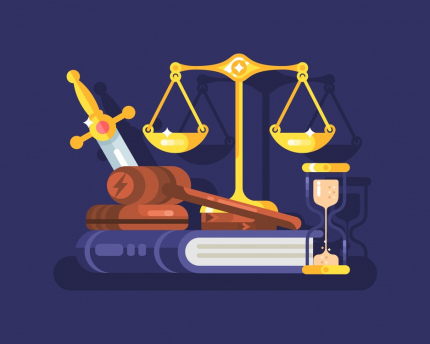In Brief: The Judiciary Act of 1789

It was one of the first acts of that first Congress, and for the most part, it remains intact.
The authors: The act was written by Sen. Oliver Ellsworth of Connecticut, who later served as the third chief justice of the United States Supreme Court, and Sen. William Paterson of New Jersey, who later served as associate justice of the Supreme Court.
The court system: The act envisioned a three-part judiciary. First, there was the Supreme Court, which had been established by the Constitution but took shape with the Judiciary Act. The high court would have a chief justice and five associate justices. “In each state and in Kentucky and Maine (then part of other states), a federal judge was to preside over a United States district court, which would hear admiralty and maritime cases and some other minor cases,” explains the Federal Judicial Center online. “The middle tier of the judiciary consisted of United States circuit courts, which would serve as the principal trial courts in the federal system and exercise limited appellate jurisdiction. Two Supreme Court justices and the local district judge were to preside in the circuit courts.”
The attorney general: The act also created the office of attorney general, currently held by Jeff Sessions.
It becomes law: The legislation was signed into law by President George Washington on Sept. 24, 1789.
The number of Supreme Court justices fluctuated: The Seventh Circuit Act of 1807 increased the number of justices to seven. By 1863, there were 10 justices, but in 1866, the Judicial Circuits Act brought the number back to seven. Just three years later, the Judiciary Act of 1869 called for nine justices. The makeup of the court has remained the same ever since.
In June 1870 Congress approved “An Act to Establish the Department of Justice.” This established the attorney general as head of the Department of Justice, according to the U.S. Department of Justice website. The attorney general represents the U.S. in legal matters.
There have been other tweaks. At one point, to be a Supreme Court justice entailed owning a tireless horse. “A separate tier of appellate circuit courts created in 1891 removed the burden of circuit riding from the shoulders of the Supreme Court justices, but otherwise left intact the judicial structure,” recounts OurDocuments.gov.
Resources:
- Encyclopedia Britannica: Judiciary Act of 1789.
- Encyclopedia Britannica: William Paterson.
- The Judicial Learning Center: The Supreme Court.
- The Federal Judicial Center: Judiciary Act of 1789 Establishes Federal Courts.
- The Federal Judicial Center: The Seventh Circuit.
- Library of Congress: Judiciary Act of 1789.
- Library of Congress: Judicial Circuits Act of 1866.
- Library of Congress: The Judiciary Act of 1869.
- National Archives, Our Documents.gov: Federal Judiciary Act (1789).
- National Constitution Center: The most underrated Founding Father -- Oliver Ellsworth?
- Supreme Court Historical Society: History of the Court.
- U.S. Congress Biographical Directory: William Paterson.
- U.S. Department of Justice: Organization, Mission & Functions Manual.
Related:
Men and women of the founding generation
Like us on Facebook and tell us what you think.

